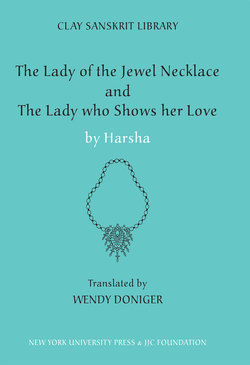Читать книгу The Lady of the Jewel Necklace & The Lady who Shows her Love - Harsha - Страница 40
На сайте Литреса книга снята с продажи.
ОглавлениеThe king “outs” Priya·darshika without her permission or her conscious knowledge, tricking Priya·darshika-as-Aran- yika-as-Vasava·datta into letting him touch her. Priya·dar- shika’s own body also forces a Cartesian duplicity upon her: her mind thinks she is touching the hand of Mano·rama, but her body knows she is touching the hand of the king. In the end, Udayana’s vision overpowers Vasava·datta’s, and she sees not what she wants to see (her straying husband making love to her as she was when he loved her) but what she fears to see, actually sees, and allows herself to be talked out of saying that she sees: her husband making love to her rival. She stages her dream, and the king stages her nightmare. The queen moves, and the king checkmates her.
Representation
Who is staging the dream? Who is in control? We might make a distinction between active dreams and passive night- mares, or conscious and unconscious tricksters. The active masqueraders are the manipulators, like Queen Vasava·da- tta at first both in ‘The Lady of the Jewel Necklace’ and in ‘The Lady who Shows her Love,’ and like Udayana later in that play; the passive, unconscious masqueraders would in- clude people who discover that, without willing it, they have been masquerading as themselves, like Vasava·datta later in ‘The Lady of the Jewel Necklace.’ Yet even (or especially) the active masqueraders tend to get caught up in their own tricks and discover a frame outside (or inside) the one that they themselves construct to impersonate someone else, a frame in which that someone else may be impersonating them, or they themselves may be unknowingly impersonat- _____________
